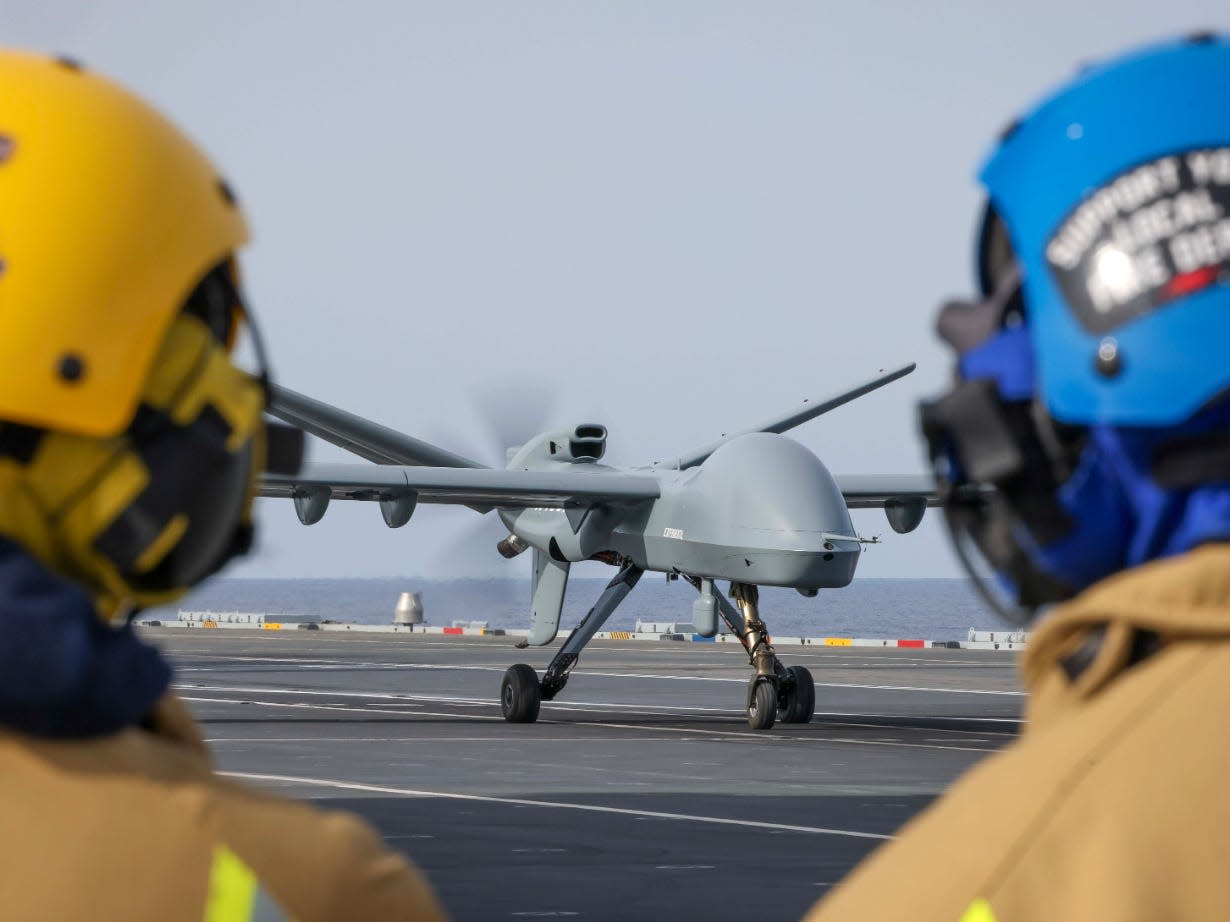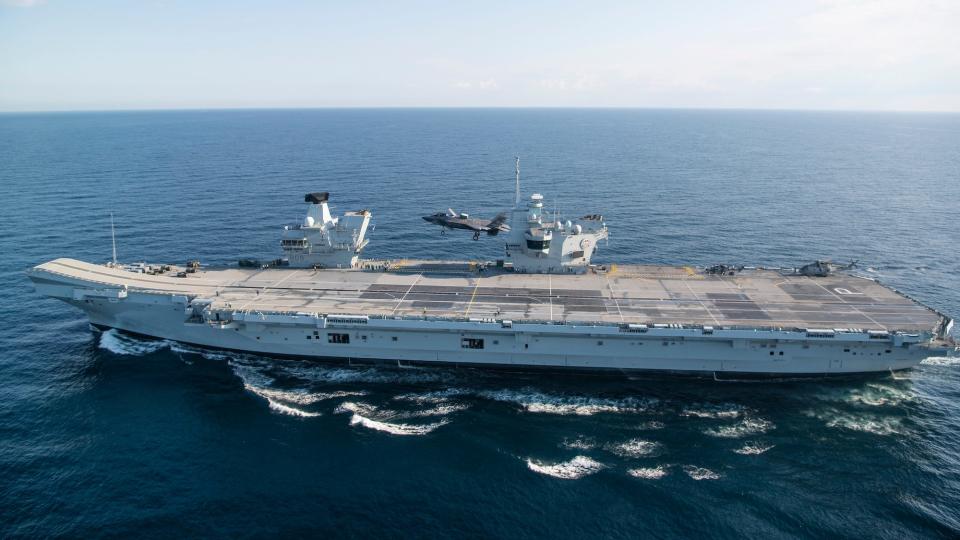Britain's Royal Navy says it did what only the US has until now: flown a large drone off the deck of an aircraft carrier

Britain's Royal Navy announced it hit a milestone that only the US has managed to achieve so far.
It flew a large drone from the deck of the HMS Prince of Wales, the UK's newest aircraft carrier.
The specially modified aircraft took off from and landed back on the deck during a trial this week.
A large, specially modified drone successfully flew from Britain's newest aircraft carrier, the Royal Navy announced, in a major milestone that only the US had until now managed to achieve.
In a trial off the coast of Virginia, the remotely piloted drone — a Mojave unmanned aircraft — took off from and landed back on the deck of the Queen Elizabeth-class HMS Prince of Wales while the vessel was undergoing training with US forces, the Royal Navy said in a Friday statement.
Mojave drones were developed from the MQ-1C Gray Eagle and MQ-9 Reaper and are adapted for short take-offs and landings. They are nearly 30 feet long and have a 56-foot-long wingspan.
Britain said that no uncrewed system of this size "has ever flown from an aircraft carrier outside the US Navy before," and the trial also showed how drones can operate alongside crewed aircraft like the fifth-generation F-35 stealth fighter jets stationed aboard the British carrier.
"The success of this trial heralds a new dawn in how we conduct maritime aviation and is another exciting step in the evolution of the Royal Navy's carrier strike group into a mixed crewed and uncrewed fighting force," Rear Adm. James Parkin, who helped plan the trial, said in the statement.
A video shared by the official HMS Prince of Wales account to social media shows the Mojave, which is capable of long-endurance missions and can be heavily armed with as many as 16 Hellfire missiles, operating from the deck of the carrier.
—HMS Prince of Wales (@HMSPWLS) November 17, 2023
General Atomics, which developed the Mojave, Gray Eagle, and Reaper, said the demonstration took place on Wednesday and included takeoffs, circuits, approaches, and the landing. "Seeing our Mojave operate successfully in this environment opens myriad new ways our aircraft can be used to support multi-domain naval operations," the company wrote in a statement. By giving unmanned systems the capacity to make short takeoffs and landings, it added, these aircraft can operate in areas that might otherwise not be possible.
The Royal Navy's Second Sea Lord Vice Adm. Martin Connell said unmanned systems represent "the next logical step" to making sure that the maritime force is capable of fighting in an "increasingly-complex operating environment."
It's not the first time that the Royal Navy has flown a drone from one of its ships — it has done so for years — but the Mojave is significantly larger and more complex than the other systems. The Mojave trial is also one of several groundbreaking firsts involving drones and aircraft that have taken place aboard the HMS Prince of Wales in recent weeks during its ongoing deployment.
In September, a drone delivered cargo to the aircraft carrier and then returned back to the British mainland. The following month, a F-35B — a variant of the fighter jet that has a short takeoff capability and can make a vertical landings — launched from the deck of the ship fully loaded in what is called "beast mode."

"During a deployment centered around experimentation and expanding the envelope of the Queen Elizabeth class, this is one of the highlights," Cmdr. Martin Russell, who oversees air operations aboard HMS Prince of Wales, said in a statement after this week's Mojave test. He said the capability felt like "a glimpse into the future of these ships."
The HMS Prince of Wales was commissioned in 2019, two years after the HMS Queen Elizabeth, which is the flagship of Britain's fleet. The two conventionally powered ships — the largest ever built by the UK — can carry two dozen F-35B jets and multiple Merlin submarine-hunting helicopters.
With the successful Mojave test, the HMS Prince of Wales is following in the footsteps of the US Navy, which has long operated large unmanned aircraft from its warships. These include reconnaissance and surveillance drones and also remotely piloted helicopters and aerial refueling systems.
Read the original article on Business Insider

 Yahoo News
Yahoo News 
